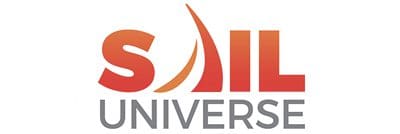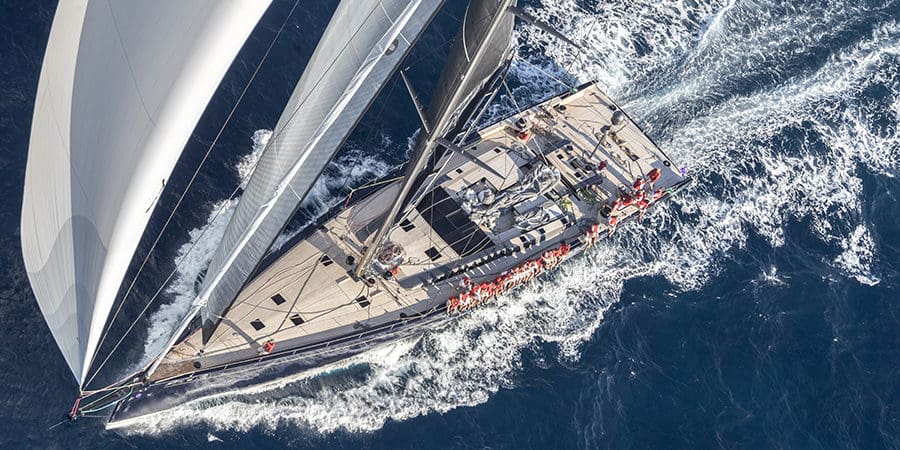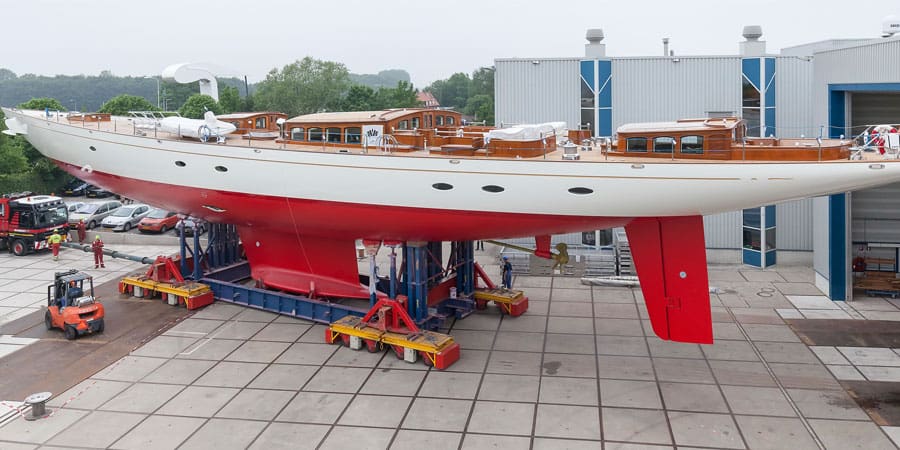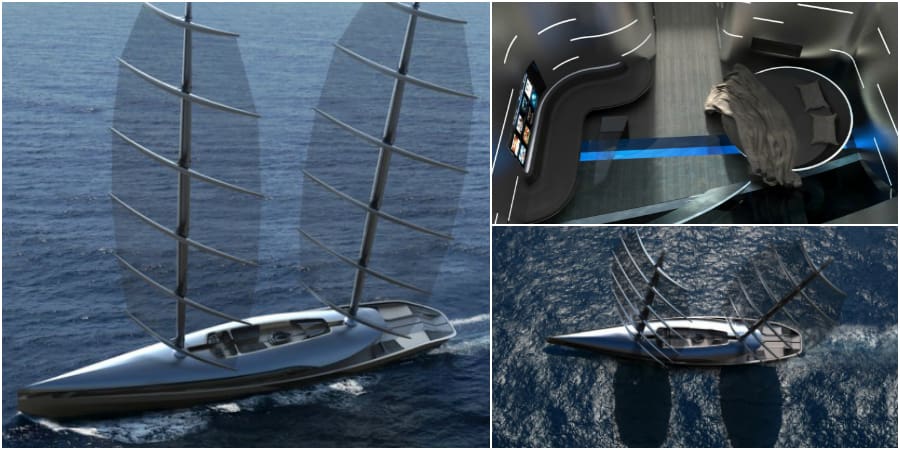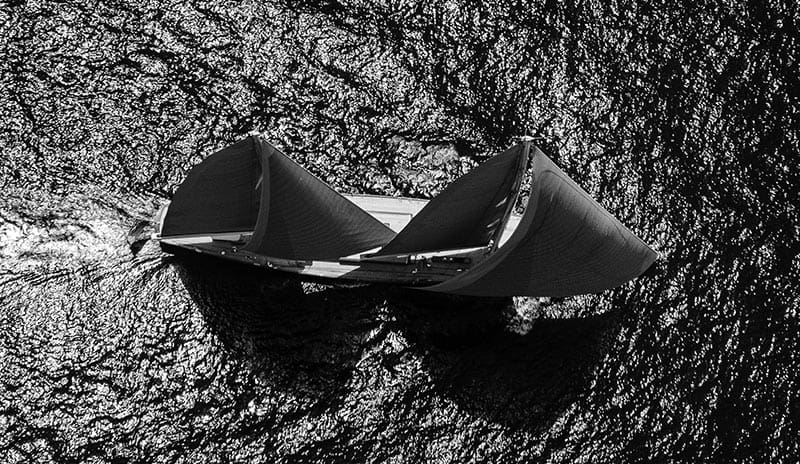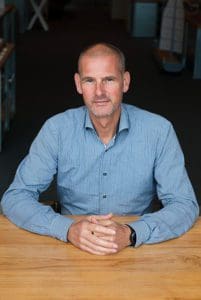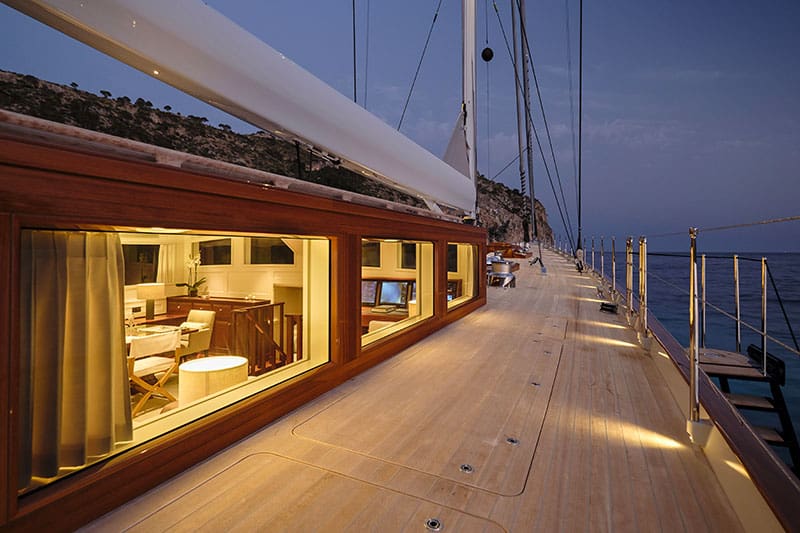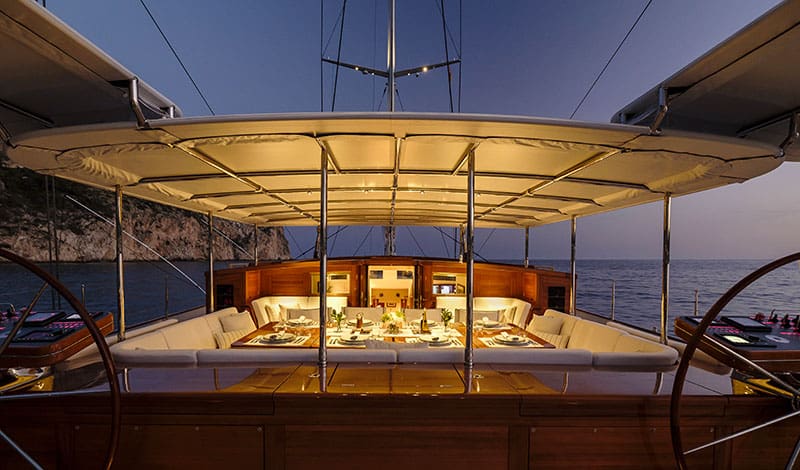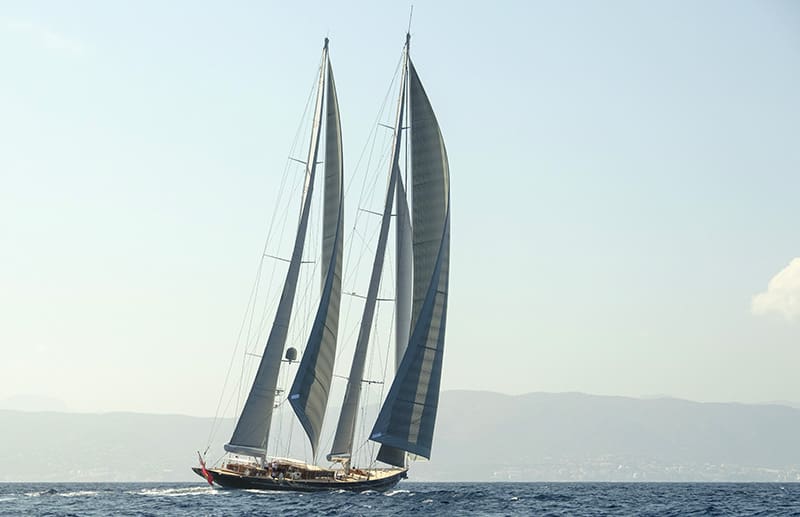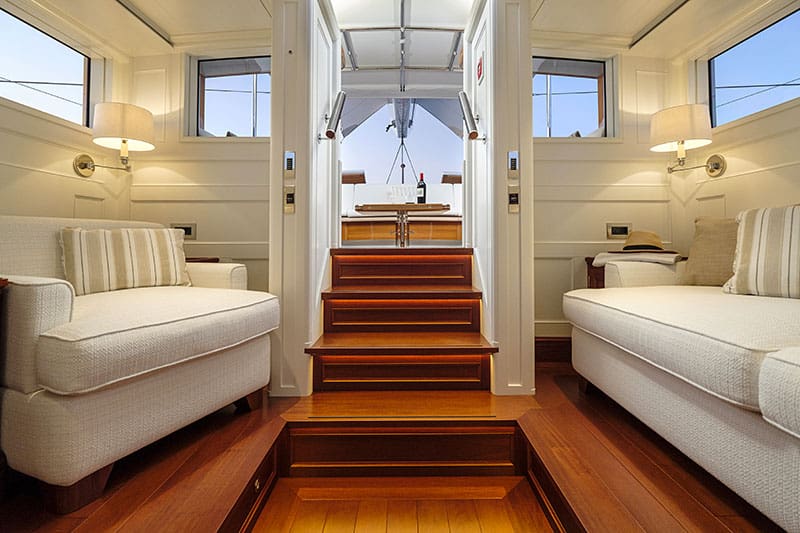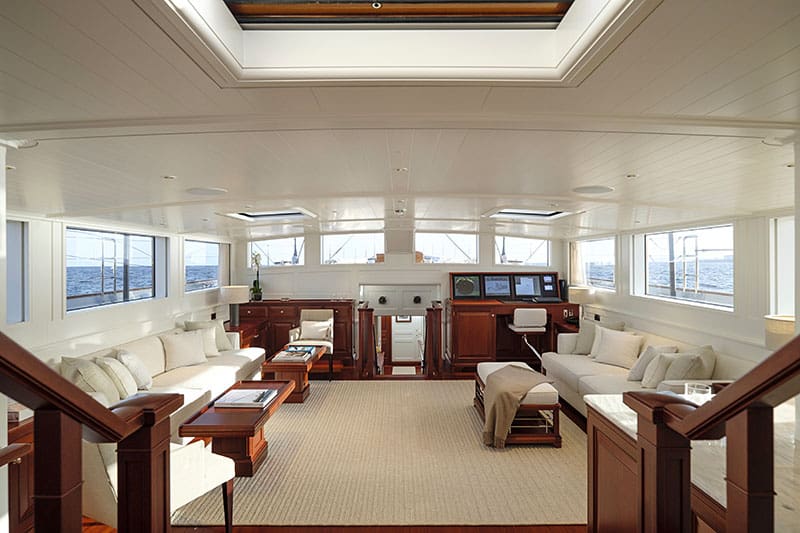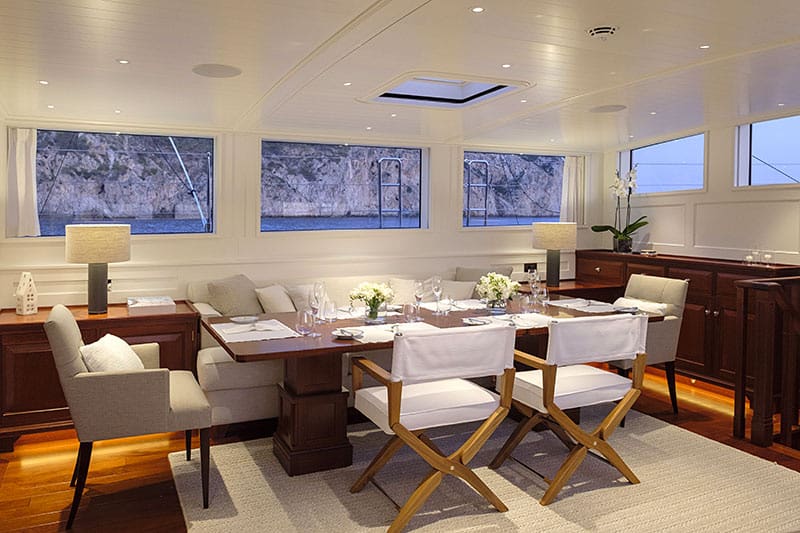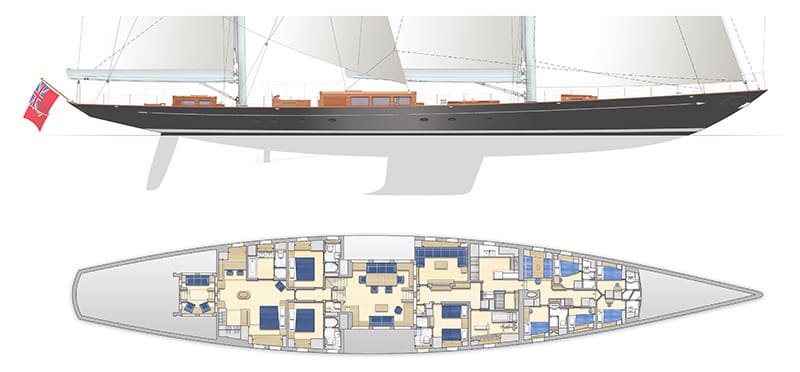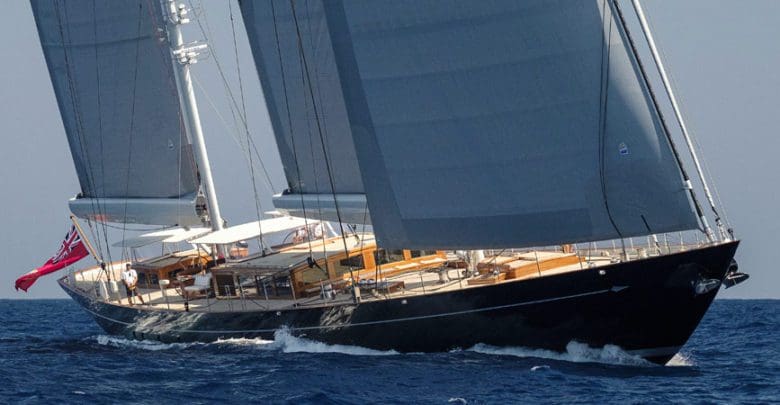
With naval architecture by Dykstra Naval Architects and interior design from Mark Whiteley Design, Aquarius is an impressive modern classic 56m / 184ft ketch realised by Royal Huisman.
This yacht combines classic hull lines with a powerful modern rig and a contemporary elegance.
The design and naval architecture of Aquarius was undertaken by Dykstra Naval Architects, who have been responsible for many famous modern classic yachts, including the Royal Huisman-built Meteor, Pumula and Kamaxitha.
The Aquarius project was led by senior designer Erik Wassen who answers questions from Royal Huisman’s independent interviewer.
Dykstra Naval Architects already has an impressive portfolio of modern classic yacht designs. What were the elements of this new brief that excited you?
The owners are adventurous, committed to serious world cruising and exploration with their family and guests, rather than just the well-trodden Med and Caribbean circuit.
They certainly wanted a beautiful yacht but the elements of security, good sea-keeping and comfort unquestionably dominated our thinking.
We needed to provide good performance for long passages but also ease of handling, so that it really is possible to get set up and sail off an anchorage in well under an hour, sail for a couple of hours and still enjoy an afternoon of relaxation or watersports.
Was the brief influenced by any specific yachts that the clients admired?
No particular yacht but the owners have much experience onboard superyachts and so were able to refer to a wide range of looks and features of various yachts including some Royal Huisman classics which they either admired, or alternatively felt did not fit in with their individual vision for the project
We were given a very clear brief and, on the basis of that, I made a sketch proposal and the owners went for it straight away.
While this captured the visual essence of the yacht we wanted to build, it was, of course, just the beginning of a longer term process of detailed refinement and development between the owners, ourselves and the rest of the team. The use of life-size mock-ups made a major contribution to that process.
What about the evolution of the deck layout, styling and features? It seems to have a different feel to some of the earlier Dykstra modern classics built at Royal Huisman.
Certainly different to Meteor, which has quite a lot happening on deck, but not so different from Kamaxitha, where the brief also emphasised the importance of uncluttered deck space.
Aquarius’ owners were very focused on this issue – as we were too. Some of those earlier designs, such as Meteor, have bulwarks and you can hide quite a lot of deck features and fittings behind bulwarks.
The elegant lines we had drawn for Aquarius demanded no more than a foot rail and the owners, who are very good at visualisation, immediately understood that you can’t hide anything behind a foot rail so we’d better keep it clean! And we did.
Has the finished yacht lived up to your own, as well as the clients’ expectations?
Undoubtedly everyone is delighted by her looks and she has been widely admired during her extensive cruising since her delivery early 2018. Sailing comfort is excellent and she sails beautifully.
My own experience so far has been in relatively light airs so I have yet to see the performance she should be capable of but I hear she performed well returning across the Atlantic earlier this year.
Her large sail plan is designed to optimise light airs performance so some reduction in sail area is required relatively early on as the wind increases.
Her mizzen is very powerful so that is normally reefed first, down to two reefs, before taking a first reef in the main. The flexibility of the sail plan then obviously provides lots of options on where you go from there.
Like any new yacht it will take a little time for the crew to learn how to get the best out of her but we’re expecting they’ll have her going full blast by the time she competes at St Barths next year.
Optimising amenities, comfort, performance and seakeeping in a relatively low volume hull must create challenges. How did you address these?
We have prioritised cruising comfort, security and sea-keeping over regatta competitiveness. The owner is keen to try racing but not at the expense of Aquarius’ absolute fitness for long distance cruising and exploration.
However, we always kept it in mind that we wanted to create a light, easily driven boat.
The space planning on every sailing superyacht, irrespective of its length, produces headaches. And when you have a slender hull with long overhangs the challenges are that much greater than for a wider-beamed contemporary yacht of the same length with a high freeboard and little or no overhangs.
Storage space is the biggest problem – spares, provisions, deck cushions and awnings, ship’s toys, lines and fenders, the list is endless but the space is finite.
It was an intensive task to apply the slide rule to every dimension throughout with the aim of saving even a few millimetres here and there but the effort has been well worth it: we have the boat we wanted.
The full scale mock-ups were especially helpful in this respect, as well as in ensuring the layout and ‘feel’ worked as well as intended.
With world family cruising in mind, how did the need for reliability affect your thinking?
The majority of our thinking pointed to the use of existing and proven technology rather than anything experimental.
For example, the use of Rondal captive reel winches because they have been so well proven over time. Sometimes there are trade-offs concerning the balance of risks.
A good example here is the decision to use halyard locks, which we see as almost obligatory on a boat of this size.
We know they can fail (though they are pretty reliable) but the alternative would have been to upscale the winches, increase halyard loads and weight and accept other systems implications. Halyard locks are simply the more reliable option.
Our general principle is that you don’t compromise reliability if you don’t have to; and where gear failure is even a possibility, you carefully manage and minimise any potential impact.
A further example of our thinking has been the fixed keel. It’s true that a lifting keel can enhance performance and offer greater access.
But a fixed keel offers peace of mind and, at 4.8m / 15.7ft (about the same as a J Class) will still get you into St Barths.
Can you tell us more about your overall approach to the rig design?
It was very good to have the sailmaker [ed. Doyle NZ] and rig maker [ed. Rondal] involved in the early stages as well as the other contributors.
Naturally each supplier has a particular perspective and each of those perspectives can have both positive and negative impacts for the others.
An obvious example is that, by transferring excessive loads from one element of the rig, you can place much greater loads on another. All of this calls for compromises and an agreement on where and how loads should be focused.
There was a lot of discussion over how high you can point with a Code sail. The speed of a yacht of this size means you experience high apparent wind angles, upwind sailing a lot of the time.
A beam reach with a 90 degrees True Wind Angle will result in something like a 45 degrees Apparent Wind Angle, with extremely high leech loads in consequence.
It was great to call upon so much experience – including that of the clients’ Project Manager Godfrey ‘Goddy’ Cray – in arriving at well-informed decisions on these issues.
Did Aquarius’ large sail plan call for any trade-off between crew size and sail handling systems?
When cruising, you generally have adequate time for planning sail changes before making them – sudden squalls of course being an exception. So there is really no issue about crew capacity while cruising, so long as everything is well planned.
It also has to be remembered that crew size on a yacht like Aquarius is driven as much by hotel management requirements as sailing operations – by no means all crew can be involved in deck roles.
Given our quest for simplicity, we decided against square-top sails. The new technology for furling a square-top sail has certainly been successfully proven by Royal Huisman but a retractable batten mechanism would still have added an extra element that we did not absolutely need.
What are your thoughts on the value of Royal Huisman’s ‘concept design’ and ‘engineering by 3D’ in optimising your designs? Did the benefits of these preparations repay the time invested?
This is really Royal Huisman’s strong point – they put in hugely detailed efforts to ensure you can fit in all of the systems, right from the start.
Which means that, when we get into the practical detail of the accommodation and amenities both above and below decks, we know exactly what we have to play with and that it will work.
There is, of course, a time and cost component to this and we are very interested in the Concurrent Design method now being developed by Royal Huisman on their latest 81m / 266ft project which has the potential to further streamline the delivery of these benefits.
This would work hand in hand with the enhanced 3-D design software now becoming available in our studio, enabling easier and faster 3-D modelling than in the past.
Do you feel the build relationship delivered ‘added value’? If so, can you give some examples?
Yes, without doubt. Royal Huisman and Dykstra Naval Architects know each other well. There is mutual understanding of how we each operate and the Dykstra team know very well what the shipyard needs from them.
From a communications point of view, there are clear advantages for Royal Huisman in the proximity of the spar-making team at Rondal, providing a high level of co-operation and shared experience.
There is self-evident value in a shipyard that can bring a high level of quality to most of the build disciplines from under one roof, and superb quality is certainly achieved.
From our point of view it is generally helpful to have access to all these disciplines on one visit, although there are, occasionally, too many voices on any given issue and we are pleased that the new Concurrent Design method will help to address this.
A clear advantage of Royal Huisman’s model is that it provides a firm foundation for really outstanding support and service post-delivery. The people who built the boat – across the disciplines – are there to follow through well into the future, which may not be so easy if work is sub-contracted.
From your perspective, what do you see as the latest emerging trends in sailing superyachts?
There is a growing divide between, on the one hand, very large sailing yachts of 70-80m / 230-262ft and smaller performance yachts under 45m / 147ft such as the series / semi-custom yachts of Swan, Wally, Baltic and Southern Winds as well as full custom.
